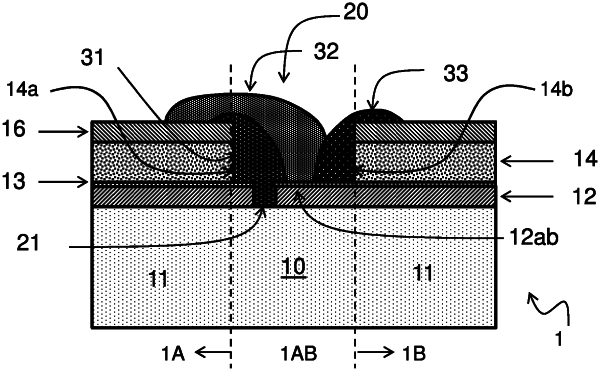| CPC H01L 31/0504 (2013.01) [H01L 31/0463 (2014.12); H01L 31/0749 (2013.01); H01L 31/18 (2013.01)] | 20 Claims |

|
1. A method of manufacturing a photovoltaic product having a plurality of serially interconnected photovoltaic cells, the method comprising:
depositing a stacker including:
a bottom electrode layer,
a top electrode layer,
a photovoltaic layer arranged between the bottom electrode layer and the top electrode layer, and
an interface layer interfacing the bottom electrode layer and the photovoltaic layer;
partitioning the stack into respective lateral portions associated with respective photovoltaic cells, wherein a plurality of boundary regions are provided such that ones of the boundary regions are provided between each photovoltaic cell and a subsequent photovoltaic cell of the plurality of serially interconnected photovoltaic cells; and
serially interconnecting, at ones of the plurality of boundary regions, mutually subsequent photovoltaic cells of the plurality of serially interconnected photovoltaic cells;
wherein the partitioning includes forming one or more trenches extending through the top electrode layer and the photovoltaic layer to expose the bottom electrode layer, with the forming one or more trenches comprising:
an irradiation sub-step, and
a mechanical fragment removal sub-step subsequent to the irradiation sub-step,
wherein, during the irradiation sub-step, an irradiation zone along a partitioning line is irradiated, from a side facing the top electrode layer, by a laser beam having a wavelength for which the interface layer has a relatively higher absorption as compared to absorption of the wavelength by the photovoltaic layer and the top electrode layer,
wherein, during the irradiation sub-step, irradiation causes material of the interface layer to vaporize causing a vapor pressure that induces a mechanical stress in the photovoltaic layer and the top electrode layer, the mechanical stress causing fragmentation of the photovoltaic layer and the top electrode layer within the irradiation zone, the irradiation being performed such that edges of the photovoltaic layer at the one or more trenches to be formed are free from re-solidified and phase-changed photovoltaic material, and
wherein the mechanical fragment removal sub-step removes, fragments of the photovoltaic layer and the top electrode layer formed in the irradiation sub-step.
|